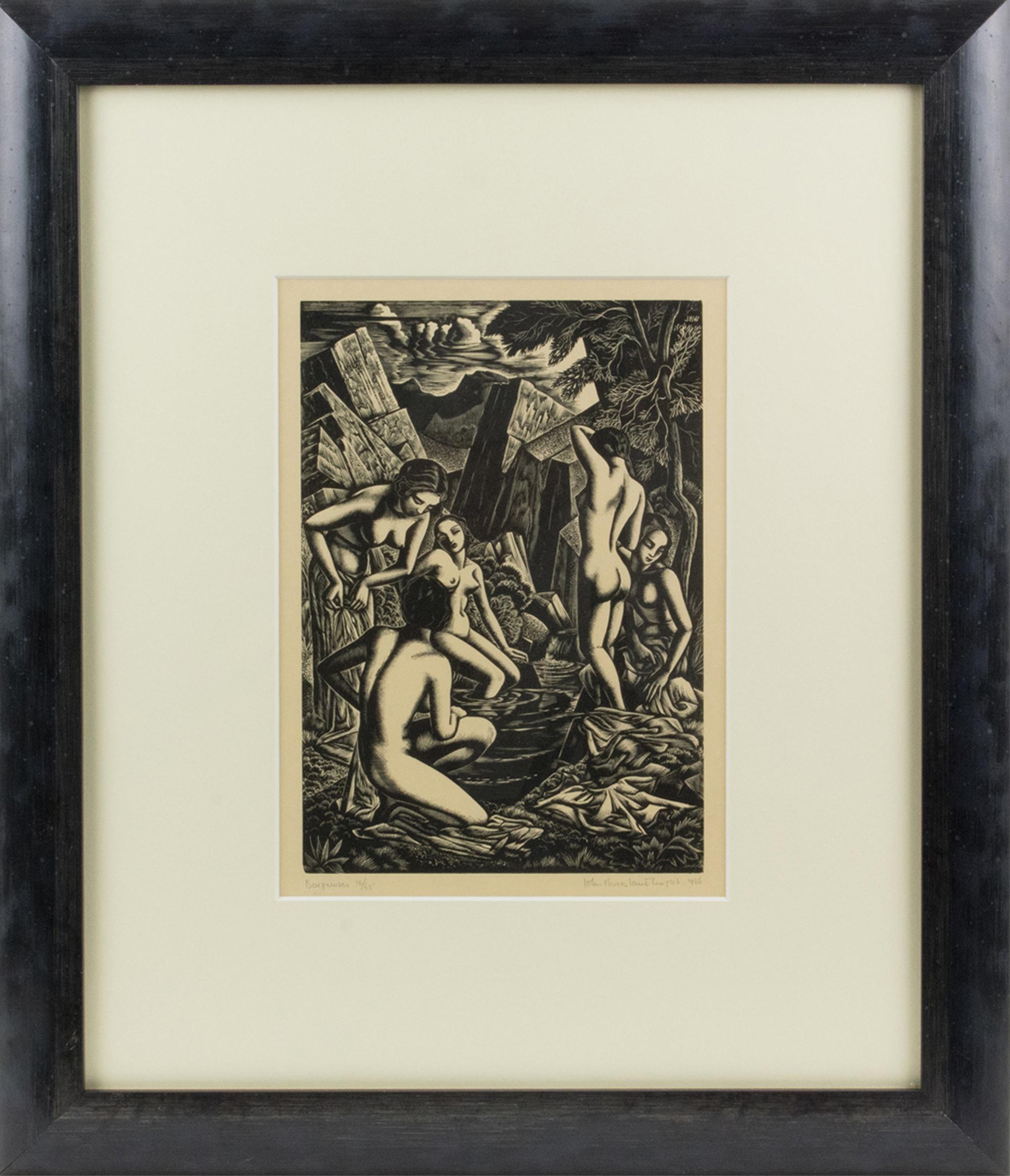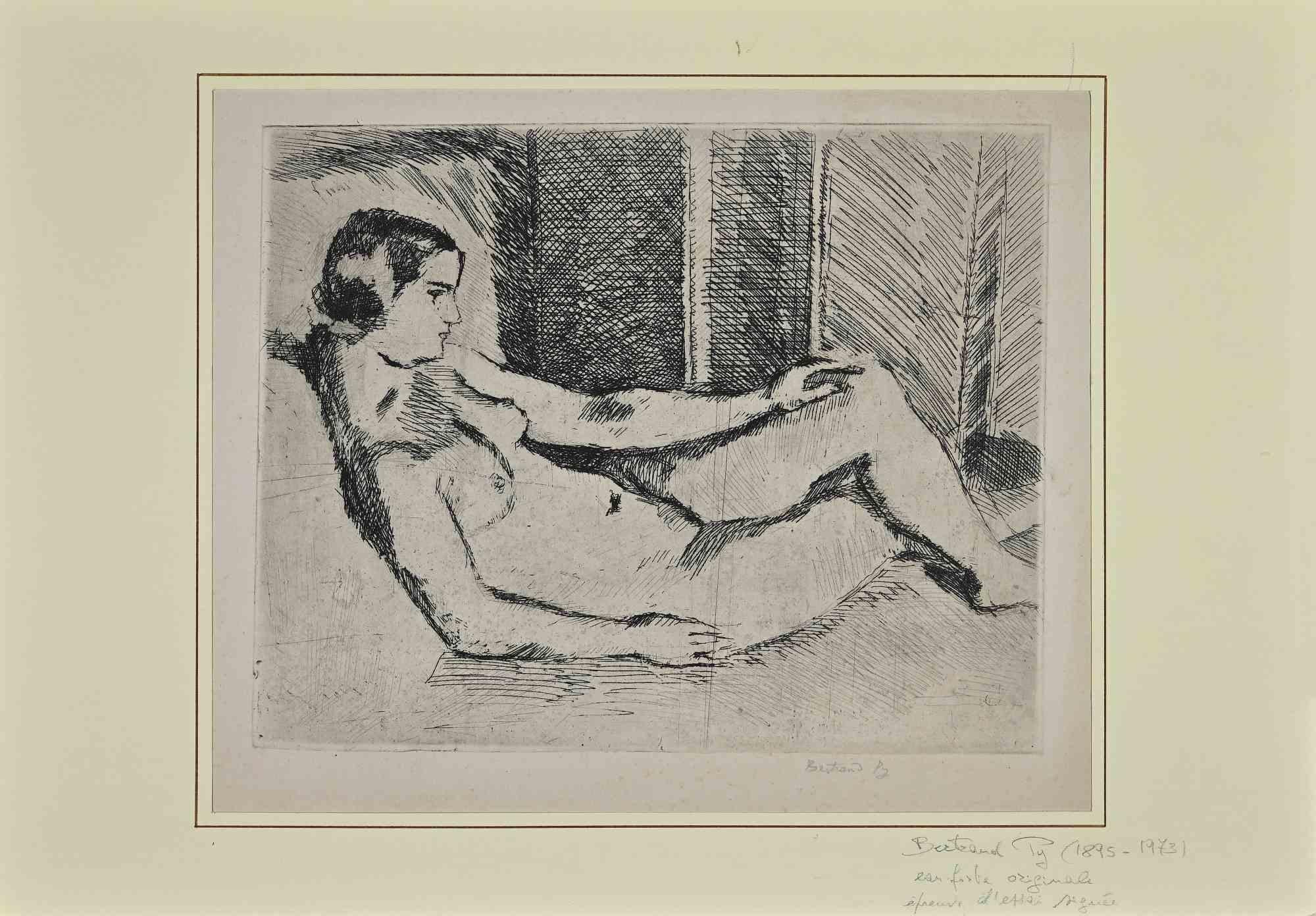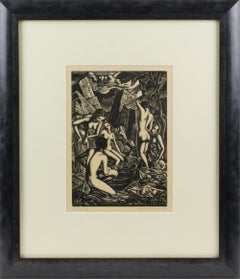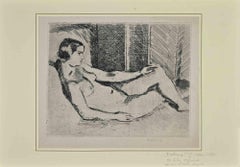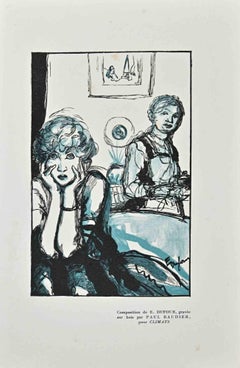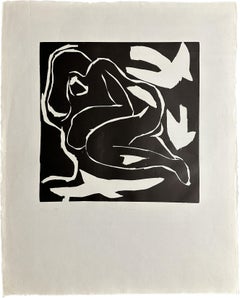Items Similar to Summer : Nude with a Fan - Original woodcut, Handsigned
Want more images or videos?
Request additional images or videos from the seller
1 of 9
Paul VeraSummer : Nude with a Fan - Original woodcut, Handsigned1922
1922
$361.26
£267.28
€300
CA$499.50
A$548.39
CHF 286.10
MX$6,636.27
NOK 3,585.77
SEK 3,378.74
DKK 2,284.21
About the Item
Paul VERA
Summer : Nude with a Fan, 1922
Original woodcut
Handsigned in pencil
Numbered /154
On vellum 32.5 x 25.5 cm (c. 13 x 10 in)
Bears the blind stamp of the editor 'Imagier de la Gravure sur Bois' (Lugt 1140a)
Excellent condition
About the Seller
4.9
Platinum Seller
Premium sellers with a 4.7+ rating and 24-hour response times
Established in 2010
1stDibs seller since 2016
3,733 sales on 1stDibs
Typical response time: <1 hour
- ShippingRetrieving quote...Shipping from: Paris, France
- Return Policy
Authenticity Guarantee
In the unlikely event there’s an issue with an item’s authenticity, contact us within 1 year for a full refund. DetailsMoney-Back Guarantee
If your item is not as described, is damaged in transit, or does not arrive, contact us within 7 days for a full refund. Details24-Hour Cancellation
You have a 24-hour grace period in which to reconsider your purchase, with no questions asked.Vetted Professional Sellers
Our world-class sellers must adhere to strict standards for service and quality, maintaining the integrity of our listings.Price-Match Guarantee
If you find that a seller listed the same item for a lower price elsewhere, we’ll match it.Trusted Global Delivery
Our best-in-class carrier network provides specialized shipping options worldwide, including custom delivery.More From This Seller
View AllSummer - Original Wooodcut, Handsigned
By Paul Vera
Located in Paris, IDF
Paul Vera
Summer, 1924
Original woodcut
Handsigned in pencil
Numbered /160
On vellum 25 x 33 cm (c. 9,8 x 12,9 in)
Edited for the 'Imagier de la Gravure sur Bois...
Category
1920s Modern Figurative Prints
Materials
Woodcut
Tribute to Cezanne : The Bathers - Original wooodcut, Handsigned
By Paul Vera
Located in Paris, IDF
Paul VERA
Tribute to Cezanne : The Bathers, 1928
Original woodcut
Handsigned in pencil
Numbered /160
On vellum 32.5 x 25.5 cm (c. 13 x 10 in)
Bears the blin...
Category
1920s Art Deco Landscape Prints
Materials
Woodcut
Nude Model Reading with Her Dog - Original wooodcut, Handsigned & numbered /160
Located in Paris, IDF
Fernand SIMEON (1869-1931)
Nude Model Reading with Her Dog, 1925
Original woodcut
Handsigned in pencil
Numbered /160
On vellum 32.5 x 25.5 cm (c. 13 x 10 in)
Bears the blind stamp o...
Category
1920s Modern Figurative Prints
Materials
Woodcut
On the Beach : Bather in the Wind - Original wooodcut, Handsigned
Located in Paris, IDF
Jean Baptiste VETTINER (1871-1935)
On the Beach : Bather in the Wind, 1928
Original woodcut
Handsigned in pencil
Numbered /160
On vellum 32.5 x 25.5 cm (c. 13 x 10 in)
Bears the bli...
Category
1920s Art Deco Nude Prints
Materials
Woodcut
Art Deco : Women with Doves - Original wooodcut, Handsigned & Numbered
By Henri Clement-Serveau
Located in Paris, IDF
Henri Clement-Serveau
Art Deco : Women with Doves, 1925
Original woodcut
Handsigned in pencil
Numbered /160
On Perrigot vellum 32.5 x 25.5 cm (c. 13 x 10 in)
Bears the blind stamp o...
Category
1920s Modern Nude Prints
Materials
Woodcut
Tall Nude with a Fan - Original etching (Kornfeld #39), 1924
By Marc Chagall
Located in Paris, IDF
Marc Chagall (1887-1985)
Tall Nude with a Fan, 1924
Original etching
On vellum 34 x 51,5 cm (c. 14 x 20 in)
REFERENCE: Catalog raisonne Kornfeld #39
INFORMATION : Beautiful proof...
Category
1920s Modern Figurative Prints
Materials
Etching
You May Also Like
The Bathers, Wood-Engraving Drawing Lithograph by John Buckland-Wright
By John Buckland-Wright
Located in Atlanta, GA
John Buckland-Wright, "Baigneuses" – Elegant Lithograph Print
This stunning lithograph print by acclaimed British artist John Buckland-Wright (1897–1954) showcases his remarkable com...
Category
1930s Art Deco Nude Drawings and Watercolors
Materials
Ink, Paper
Nude Woman - Original Etching By Bertrand PY - 20th Century
Located in Roma, IT
Nude Woman is an original etching realized by Bertrand PY (1895-1973) during the 20th century.
The original work is contained in a cream colored cardboard...
Category
Early 20th Century Modern Figurative Prints
Materials
Etching
Womanly Preoccupation - Original Woodcut Print by Paul Baudier - 1930s
Located in Roma, IT
Womanly Preoccupation is an original woodcut print on ivory-colored paper realized by Paul Baudier (1881-1962) in the 1930s.
On the lower right description in French.
Very good con...
Category
1930s Modern Figurative Prints
Materials
Woodcut
Nude with Birds 1966 Signed Limited Edition Large Woodcut
By Philip Sutton
Located in Rochester Hills, MI
Philip Sutton
Nude with Birds - 1966
Print - woodcut 27'' x 33''
Edition: signed and numbered in pencil 16/30
Image Size; 18"x 18"
Condition Note; Handling Creases.
Philip Sutton s...
Category
1960s Figurative Prints
Materials
Linocut, Woodcut
$600 Sale Price
20% Off
Mexican Idyll, 1936 - 20th Century Nude Linocut Print with Trees and Shells
By Leon Underwood
Located in Kingsclere, GB
Leon Underwood was a British sculptor, wood engraver, painter and writer of the twentieth century. Underwood was born 25 December 1890 in London, and studied at the Regent Street Pol...
Category
20th Century Nude Prints
Materials
Linocut
Boudoir - Linocut on Paper by Jean Barbe / Mino Maccari - 1945
By Mino Maccari
Located in Roma, IT
Image dimensions: 15 x 11.5 cm.
Boudoir is a black and white linocut on ivory-colored paper, realized in 1945 by the Italian satiric master Mino Maccari (1898-1989).
Hand-signed wi...
Category
1940s Figurative Prints
Materials
Linocut
More Ways To Browse
Antique Fans
Paul Vera
Original Nude Art Deco
Polo Match Painting
Psychedelic Sculpture
R Jones
Richard Orlinski Kong
St Germain Des Pres Painting
Stubbs Painting
Sunbather Sculpture
Tobias Martin
Toucan Painting
Union Jack Art
Van Gogh Sculpture
Venus Nude Sculpture
Vintage Figure Skater
Wasp Nest
American Country Life
